Exploring your ancestry to learn more about your family’s roots and uncover your ethnic background can be an incredible journey. It’s one that millions of people worldwide have embarked on over the last couple of decades since direct-to-consumer DNA tests first became available. (1) With the growing interest, it’s no surprise that more and more testing options are available.
“DNA testing is a simple way to learn about your ethnic background and ancestral roots going back multiple generations,” says Dr. Aneesha Dhargalkar states. “Many DNA testing organizations now include a health report as part of their consumer offerings. This information broadly provides information on how your unique genetics impact your health regarding genetic-related medical conditions and how different foods, vitamins, and exercises impact your overall well-being. It is important to review all DNA testing with your medical provider before making any healthcare decisions.”
Most tests require a simple cheek swab or saliva sample to help you discover how your ancestors’ movements and life experiences have led you to where you are today. After sending your sample to a lab, it’s analyzed to determine which variants throughout your DNA connect you to reference populations across the globe. (2) Within weeks, you can see a full breakdown of what percentage of your DNA is tied to various ethnicities and geographic regions.
In most cases, you can also compare your DNA against that of millions of others who have taken the same test or uploaded results from another. This can help identify past relatives and connect you with potential living family members of close and distant relationships.
While the process is similar among many popular testing brands, each offers unique features and information through its proprietary testing process. After reviewing various tests, we’ve determined that Living DNA is one of the best DNA testing kits available for at-home testing. We explain why in our review below, which details the whole user experience, including testing costs, time to receive results, the depth and value of the results, and how the company protects your privacy.
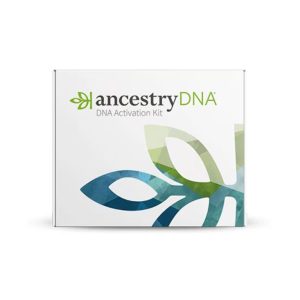

Key product features
What you should know
Living DNA offers direct-to-consumer genetic testing that provides a detailed look into one’s ancestry, including maternal and paternal lineage. It covers 150 regions around the globe, with some areas broken down into sub-regions for more in-depth insights into where your ancestors may have lived.
- We enjoyed how detailed our ancestry results were, especially the information on the subregions within Europe and Africa and the haplogroups.
- The test kits cost $124 to $225, which is more than some competitors, but it’s a one-time fee rather than a recurring subscription.
- Those looking to connect with relatives will enjoy the family matching option that helps you discover and connect with others within Living DNA’s database who share part of your DNA.
- If you’re interested in learning more about how your genes impact your health and wellness, you can add on a well-being kit.
What is Living DNA?
Living DNA is a UK-based genetic testing company that launched in 2016 and expanded to a second operations base within the U.S. in 2018. However, its roots are much deeper than that, stemming from its parent company, DNA Worldwide, which has been around since 2004. The company specializes in analyzing DNA samples to provide customers with detailed information about their ancestry.
Its DNA test kit features a quick, noninvasive cheek swab completed at home and returned to a lab for evaluation. Similar to competitors like AncestryDNA and MyHeritage, Living DNA analyzes your autosomal DNA to capture insights from your heritage on both sides of your family. (3) Your results are compared to a reference panel to provide ethnicity percentages broken down by regions and sub-regions.
“Autosomal DNA testing is the most accurate since it tests both maternal and paternal DNA lines,” says Dr. Dhargalkar. “Living DNA tests autosomal DNA which really is the gold standard in DNA testing. No matter what DNA testing kit you use, ensure it tests this type of DNA.”
Unlike some of the others, it doesn’t stop there. The testing goes deeper by providing your haplogroups, or ancestral groupings, to help you trace your family’s maternal and paternal ancestors back to their origins and see how they migrated around the world over thousands of years. (4) You can take it one step further by adding Neanderthal testing to learn how your ancestry is connected to the Neanderthal and Denisovan species.
Living DNA’s testing isn’t solely meant to tell you about your past. You can also choose to add health and wellness insights to your results as an optional upgrade. Through the same DNA sample, you can learn more about how your genes impact your well-being in various ways, including how your body breaks down essential nutrients and responds to physical activity. These results can help inform lifestyle choices to help you optimize your wellness.
Combining the past and present within your DNA results ties into the company’s core values and mission to help people around the globe reconnect with themselves and each other. The idea is that we can use our genetic information to help us live more fulfilling and healthy lives.
Specs
| Price | $124 to $225 |
| Health testing | Optional upgrade |
| Sample type | Cheek swab |
| Results time | Six to eight weeks |
| Results availability | Online |
| Trial period | None |
How does Living DNA work?
Living DNA allows you to ease into the DNA testing process by offering an optional seven-day free email course. Throughout that week, you’ll receive information on how DNA works, how it can serve you, which test to take, and what happens to your DNA data after taking it.
When you feel ready to test through Living DNA, your next decision will be which kit to purchase. You can choose between four options: full ancestry, well-being, ancestry and well-being, or ancestry and Neanderthal. These options are available directly through Living DNA’s website—unlike some competitors, you won’t find them on Amazon or other third-party sites.
The time it takes to receive your kit after ordering depends on your location. Shipping typically takes five to 10 business days in the U.S., 10 to 20 in the EU, and 14 to 20 business days anywhere else in the world. Our tester noted that it took exactly 14 business days to receive notice that the company has the sample and she lives in Massachusetts.
Once it arrives, you’ll have everything you need to start testing as long you’re feeling ready and well. You may be eager to get it done quickly, but if you’re feeling sick, it’s best to wait to take the test to help prevent contamination and a potential illness outbreak within the lab. (5) The unopened kit expires one year after you order it, so you have plenty of time to ensure you get well.
Regardless of your chosen kit, you only need to collect one sample. The process is the same for each, and here’s what you can expect:
- Activate: Once you receive the test kit, you can open the box to find the test activation instructions and the code needed to complete the registration process. It’s best to complete this step before collecting your sample to ensure you don’t forget, as the lab can’t process your sample without it.
- Prepare: The best time to collect your sample is first thing in the morning. You should also refrain from brushing your teeth, eating, or drinking anything other than water for at least an hour before swabbing. This ensures you get the highest quality sample that isn’t contaminated with outside particles.
- Collect: Start by removing the swab from the packaging. Rub and rotate it firmly along one of your inner cheeks for 30 seconds, then switch to your other cheek and swab that side for an additional 30 seconds.
- Seal: Place the swab into the designated plastic sleeve swab end first. Next, remove the barcode sticker from the swab’s original packaging and use it to seal the new envelope with your sample inside.
- Return: Place the sealed swab sleeve into the return mail packaging. In some locations, the packaging will include pre-paid shipping, while in others, you’ll be responsible for return shipping costs. You can contact the Living DNA support team to find out if pre-paid shipping is included before ordering your test.
- Wait patiently: You can track your sample to view when it’s received by the lab, its status throughout the process, and when your results are ready. It typically takes between six and eight weeks to receive your results.
Taking any at-home testing kit can feel stressful when you’re worried about doing it correctly and not contaminating your sample. Living DNA has a generous policy to help ease your stress. If your first kit fails, the company will send you a new kit for free, or you can get a refund (minus shipping and handling fees). If your second kit fails, they will send one more for free. After that, you won’t be offered any more tests and won’t be able to attempt to take the DNA test through Living DNA again.
If you’ve already taken a DNA test through another company, you can still use Living DNA’s services to learn more about your ancestry and tap into its DNA matching pool to find relatives. You can upload your DNA results for free and receive a limited ancestry report based on continental results. If you want more detailed information, you can upgrade to receive your full autosomal results, with another upgrade available to get your well-being information.
What does Living DNA tell you?
Whether you’re new to DNA testing or a seasoned expert, knowing what information each test provides is vital in determining which service is best for you. Living DNA offers some of the most in-depth results, and what you learn will depend on which kit you’ve chosen. Below, I’ll discuss what you can expect from your experience.
Full ancestry
You’ll receive a detailed breakdown of your full ancestry report unless you purchase the well-being-only kit. While analyzing your sample, the lab technicians look for variants throughout your DNA and match those to reference panels to determine where your DNA originates. The results are displayed in your portal as percentages assigned to one or more regions.
Living DNA’s ethnicity estimates span 150 different regions around the globe, including various sub-regions within specific areas. That means if your results include African, British, or European ancestry, your results are broken down even further by pinpointing more specific origins within each region.
Unfortunately, even with the extra details, Living DNA’s geographic reach is much smaller than AncestryDNA and MyHeritage’s, which include thousands of geographic regions. This could impact the overall accuracy of your results if much of your heritage lies in areas not well covered in the reference groups. In those cases, Living DNA states that you’ll likely be assigned some ancestry for populations that contributed to those regions. You won’t receive any notification that this is what’s happening, but you may notice differences if you’ve taken other DNA tests or have a strong paper trail indicating your family history. The company continuously expands its reference panel and updates your results as more regions are added to increase accuracy.
Living DNA also offers something many other competitors don’t: your maternal and paternal haplogroups. These groups can trace your family ancestry on each side of your lineage to its African origins and show the migration patterns over tens of thousands of years. (6)
Everyone will receive results for maternal ancestry, passed down from mothers to daughters and sons through mitochondrial DNA (mt DNA). On the other hand, only genetic males will receive paternal results since Y-DNA can only be passed from father to son. (7) Females will still receive information about their paternal lineage through autosomal DNA. Still, they’ll need to ask a close male relative on their father’s side to complete the test and share the results to know their paternal haplogroup.
“Y-DNA and mitochondrial DNA are specific DNA types passed through the paternal (for Y-DNA) and maternal (for mitochondrial DNA) lines. Analyzing these specific DNA types allows MyHeritage to dive deeper into your ancestral roots and family background over multiple generations.” Dr. Dhargalkar says.
DNA Matching
Once you have your genetic information, you can opt into Living DNA’s Family Networks tool to discover potential distant relatives. Through your online profile, you can connect with people worldwide who have taken this test or uploaded results from another and share DNA sequences with you. Living DNA uses the amount of shared DNA and those segment lengths to predict how closely related you are to each match.
Well-being results
If you purchase a kit with a well-being assessment, you’ll receive valuable insight into how your DNA may impact your health and wellness. Your report will show how your genes impact 14 different traits, including the metabolism of various vitamins, your Celiac disease risk, your body’s response to carbohydrates and sugar, and how quickly you can recover after physical activity. You can read through actionable insights that help you understand how to use that information to inform your lifestyle choices and optimize your well-being. (8)
“Specific blood tests performed through LivingDNA can provide accurate health information,” says Dr. Dhargalkar. “These include DNA testing to see how genetic variants affect Vitamin A, B12, C, and D metabolism and specific testing for lactose tolerance and celiac disease risk. Remember, all DNA well-being results must be discussed with your medical provider before making any healthcare decisions. Genetic testing is only one part of the bigger picture of your overall health. It must be given the appropriate weight compared to other factors when making any medical decision.”
Neanderthal reports
While available to anyone, genealogy enthusiasts may be especially excited about the possibility of connecting their DNA to the Neanderthal and Denisovan human species from 80,000 years ago. You can discover how closely linked you are to each species and compare your results to the rest of Living DNA’s user base. From this information, you can learn how your physical characteristics are influenced by your genetic ancestry from these Archaic species, such as sleeping patterns, altitude adaptation, hair color, and skin pigmentation.
Who is Living DNA recommended for?
Living DNA can be an excellent tool for learning more about your heritage, connecting with more relatives, and understanding your own body more profoundly. If any of that resonates with you or you fall into one of the below groups, you might consider buying a kit.
- Any age: While some DNA kits are limited to adults only, that’s not the case for Living DNA. This test is available to anyone of any age. For individuals under 18, the person activating the kit must confirm they’re the legal parent or guardian. Similarly, if you’re helping another adult with the test, you need to verify that you have their consent to manage it on their behalf.
- Health and wellness enthusiasts: The well-being kit is a phenomenal addition for those who want to understand better how genetic factors may influence their fitness levels, weight management, digestive system, and more.
- Interested in family history: Maybe you’ve heard stories passed down about where your family has come from, but you want to learn more and dig deeper. This kit can help you uncover more details about your family’s origins and ancestors’ lives.
- Adoptees: If you’ve been adopted or know little about your heritage for any other reason, the Living DNA test can help fill in the missing puzzle pieces. (9) Moreover, it can help you discover and connect with relatives.
Who is Living DNA not recommended for?
Like any at-home testing kit, Living DNA won’t be the best solution for everyone. You may need to consider a different testing service or professional support depending on your history and what your goals are, such as:
- Seeking a medical diagnosis: While the well-being kit can provide valuable insight into how your genes can affect your lifestyle, it cannot diagnose medical conditions. (8) For example, your risk level for Celiac disease won’t confirm whether you have the condition. You would need additional Celiac testing to screen for and diagnose it. Talk to your medical provider to discuss the risks and benefits of this additional testing to see if it is right for you.
- Paternity testing: You can learn a lot about your family history through at-home DNA testing. However, the Living DNA kit is not intended to test for paternity or validated for legal purposes (immigration/passports). Instead, you could seek those services through Living DNA’s parent company, DNA Worldwide.
- Undergoing certain medical treatments: Chemotherapy can damage parts of your DNA, causing a low cell rate in some people, which makes it challenging to extract ancestry information. (9) It’s recommended you wait at least six months after your final treatment to take any DNA testing kit.
- Living in restricted areas: In some locations around the world, direct-to-consumer DNA testing is restricted or illegal, including in France, Israel, Iran, Libya, Sudan, Somalia, North Korea, Lebanon, Russia, and Syria. Living DNA states it can ship nearly anywhere in the world, but it advises you to become familiar with and follow the DNA testing laws in your country. Even if it successfully ships to you, it may get stopped in customs when you try to return your sample to the lab.
How much does Living DNA cost?
One of the things we appreciate most about Living DNA is how straightforward its pricing is. The simple layout makes it easy to understand the cost and what’s included in each kit, which I’ve summarized below. Moreover, you can start with the basic ancestry or well-being kit and upgrade anytime to see additional results that your original test didn’t include. The best part is that Living DNA will pull that information from your original DNA sample, so you don’t have to order a new kit or provide a new sample.
Your ancestry ($124 + shipping): If you’re only interested in learning about your heritage and potentially connecting with new relatives, the basic DNA test will provide what you need. You’ll see your full ancestry report, including maternal and paternal haplogroups, and have access to Family Matching. While reviewing this product, we found it was on sale for $90.
Well-being kit ($129 + shipping): Using the same cheek swab method, you can learn how genetics impact your health and wellness. You won’t receive your ancestry results with this kit, but you can still access Family Matching if you sign up for it. Besides, you could upgrade to receive your ancestry results at any time or upload your DNA data from another test. On sale, this kit is discounted to $112.
DNA and well-being kit ($225 + shipping): This is the ultimate bundle option to learn about your family history and how the genes passed down to you impact your body’s fitness and nutritional responses. You’ll receive your full ancestry report, access to Family Matching, and a well-being report. You can save over $35 by taking advantage of sales that drop the price to $188.
DNA and Neanderthal kit ($145 + shipping): For genealogy gurus, the recent ancestry results may not go deep enough into your heritage. By adding the Neanderthal results, you can see extended results that date back 80,000 years ago and can help you understand how your traits now may have been influenced by Archaic human species. We found this kit on sale for $130, plus Living DNA was offering an additional coupon code that took an extra $10 off the price.
You’ll notice that shipping is an added cost alongside the price of the kit. When ordering the kit in the U.S., we found shipping costs $9.95. Remember that, depending on where you live, you may also be responsible for postage to return your sample, which can vary depending on where you are and which mailing service you use.
Can I keep my Living DNA information private?
Living DNA states that privacy is a fundamental priority and that you’re in charge of your DNA. The company never shares or sells your personal information or data to third parties, such as research companies, government agencies, or insurance companies. Your information is stored in secure databases and anonymized before third parties see it, including laboratory partners that analyze your sample. This is why registering your sample is critical. The barcode you place on the sample package before returning it ties your results to your account—it’s never stored using your personal information.
Additionally, you must opt into Family Matching, which means that you have the choice to share your data for DNA matching or not. It’s not automatically uploaded to Living DNA’s database, as we’ve seen with many other DNA testing companies. You can keep your results private if you have no interest in building a family tree or connecting with distant relatives. If you want to use this service but still feel uneasy, you can also use a username that isn’t your real name.
Similarly, DNA testing can be incredibly valuable for research, but your data will only be used if you explicitly provide your consent. Even then, your data will remain anonymous, and you can opt-out at any time.
What are the risks of sharing your DNA with Living DNA?
Unfortunately, any time you share personal information online, you must consider the potential risks involved. One of the most common questions we hear is if these tests are worth the privacy risk. This is a valid concern that many of the big-name companies we’ve reviewed have considered by implementing multi-level security measures in place to protect your information. However, we’ve all seen how hackers can get through even the tightest security walls, so a data breach will always be possible.
You should also consider how you might feel should your ancestry data uncover any surprises or family secrets. Your results may reveal unexpected relatives or indicate that you aren’t genetically connected to family members you thought you were related to. For some, this may cause emotional distress, while others may be happy to find new connections or get clarity on these relationships.
Additionally, there have been growing concerns over law enforcement access to public and private DNA databases since being used to arrest a serial killer (Joseph James DeAngelo) in 2018 and in other criminal investigations since. (9) Living DNA explicitly states in its privacy policy that it will not share your information with law enforcement unless the company feels legally compelled. (10) While this likely isn’t a concern for most people, and some may even find it a benefit to help catch criminals, others may feel it violates personal rights to access this information without the express consent of the DNA testers.
Finally, if you choose a kit with well-being testing, you should consider the potential for genetic discrimination. Thanks to the Genetic Information Nondiscrimination Act of 2008, health insurance companies and employers cannot discriminate based on your genetic information. (11) But that law isn’t all-encompassing as it leaves out life, disability, long-term, and other voluntary insurance plans. Some of the risk factors unveiled through your well-being report could impact your ability to obtain coverage.
Our experience with Living DNA
Living DNA’s clear, well-laid-out website left a positive first impression. It was easy to navigate and learn more about test kit options, costs, and what to expect from our results. The comparison table was incredibly helpful when determining which kit to order. It provided an easy-to-read list of what’s included in each one.
I had some questions I wanted answered before proceeding with the test, so I sent them to the customer service email. I was told I could expect a response within 24 to 48 hours. However, each time I reached out, I received responses from the team in less than 10 minutes.
Ultimately, we decided on the basic Full Ancestry kit, knowing we could upgrade to the well-being or Neanderthal kits later. The kit arrived quickly, just two days after we received the shipping notification. We opened the box immediately and followed the instructions to activate the test, which required our name, email address, date of birth, country of birth, and biological sex. That final detail is vital to Living DNA’s process to ensure it can provide accurate information for maternal and paternal lineage since the Y-DNA test can only be performed on genetic males.
The testing instructions were clear and easy to follow. We watched the quick instructional video, and it helped ease some of the nerves we felt about collecting the sample incorrectly. The cheek swab took about two minutes to complete. It was so easy, and we enjoyed this collection method much more than the spit and blood samples we had to provide for other DNA testing kits. Trying to insert the swap into the collection pouch with one hand while holding the sample in the other was challenging. Our tester ended up dropping the sample on the counter, which created some panic that it would now be contaminated with pet hair or other debris. It would be beneficial if Living DNA included an extra swab for situations like this.
We also initially thought we were missing the barcode needed for sealing and identifying the sample because we couldn’t find one that matched the image in the instructions. We had to contact customer service, who explained that kits shipped in the U.S. use a QR code instead of a standard barcode, as in the UK. We wish they had separate instructions to help make that more clear for U.S. testers.
To mail it back, we brought it to the post office to ensure it got scanned and delivered right away, but you could have your mailman pick it up or use a mail dropbox.
Overall, the process was very simple, but the expected six- to eight-week wait time for your results is one of the longest among competitors. Fortunately, we received our results quicker than that. It took only four weeks from the date we shipped the sample to receive the notification that the results were ready. From there, all we had to do was log in to our account to see the details.
We found the results more challenging to navigate on a mobile device. It would show the map of the world and the highlighted areas where the DNA was detected, but it wouldn’t give a basic breakdown. However, on the dashboard, we could easily see the map and the percentage breakdown next to it, which was very clear and easy to navigate
From our research, we knew that Living DNA references fewer geographical areas than some competitors, so we tailored our expectations to that. Still, we were impressed with the expanded information provided by the sub-regions. We also enjoyed exploring the interactive maps for each ethnicity indicated in our results. They offered a lot of fascinating insight into each region’s background.
The added information about maternal lineage was fun to review and helped us understand more about the origins and migration patterns on that side of the family. As a genetic female, our tester wasn’t eligible for the paternal lineage, but we’d expect the experience to be extra rewarding to see origins on both sides of the family.
One area we wish was more clear upfront was how the Family Matching feature works. We had to dig deep into the support section of the website to learn more and decide if we wanted to opt into it. The DNA matching and family tree building features don’t feel as advanced as others we’ve used. You can view matches, message connections, and compare DNA sequences to see how closely related you are. It’s free to use, so it makes sense that it doesn’t offer access to historical records and other advanced features like those that require subscription fees.
Our at-home testing methodology
While evaluating Living DNA, we considered several factors critical to the overall user experience so we can provide you with an honest, detailed review. Besides cost, results turnaround time, and accuracy, we also considered many other vital features. For example, we use first-hand testing to provide information on the ease of ordering the test and collecting the sample, the value of the results, and our experience interacting with the customer service team. You can see our full at-home testing methodology here.
Testing criteria
Accuracy and reliability—40%
Accurate test results are the most important element of at-home testing kits, as they form the basis for the user’s health decisions. Whether you’re exploring your genetic background, tracking fertility cycles, or identifying food sensitivities, the integrity of the data provided by these tests is crucial. Reliable results help users confidently make informed decisions for personal health management or discussions with their healthcare provider.
Here’s what we look for:
- Measurement precision
- Consistency
- Environmental influence
- Sample integrity
- Lab standards
Ease of use and accessibility—30%
The ease of use and accessibility of at-home testing kits determine how effectively individuals can utilize these products. A testing kit may offer the most advanced technology and accurate results, but its benefits are significantly diminished if it is not user-friendly. Ensuring that these kits are accessible and easy to use empowers a broad range of users, including those who may not have prior experience with medical testing or technology. This enhances the likelihood of correct usage, accurate sample collection, and reliable results, ultimately improving the overall experience and satisfaction. We evaluate:
- Instruction clarity
- Sample collection process
- Online platform usability
- Support resources
- Accessibility features
Value—20%
Evaluating the value of at-home testing kits is critical, encompassing the initial purchase price, long-term financial implications, and overall cost-effectiveness. A high-value kit delivers reliable results without imposing excessive costs over time, so users can receive meaningful health benefits for their investment.
We evaluate:
- Cost of the kit
- Insurance coverage
- Long-term cost analysis
- Warranty
Customer experience—10%
A positive customer experience helps users feel supported, informed, and satisfied at every stage of their interaction with the kit. This category considers multiple touchpoints, including customer service, delivery and packaging, user feedback, and return policies. By prioritizing customer experience, we aim to recommend products that not only meet technical and performance standards but also provide a seamless and supportive user experience.
Our factors in this rating include:
- Customer service
- Delivery and packaging
- User feedback and reviews
- Return policy
Compare Living DNA with other DNA testing kits
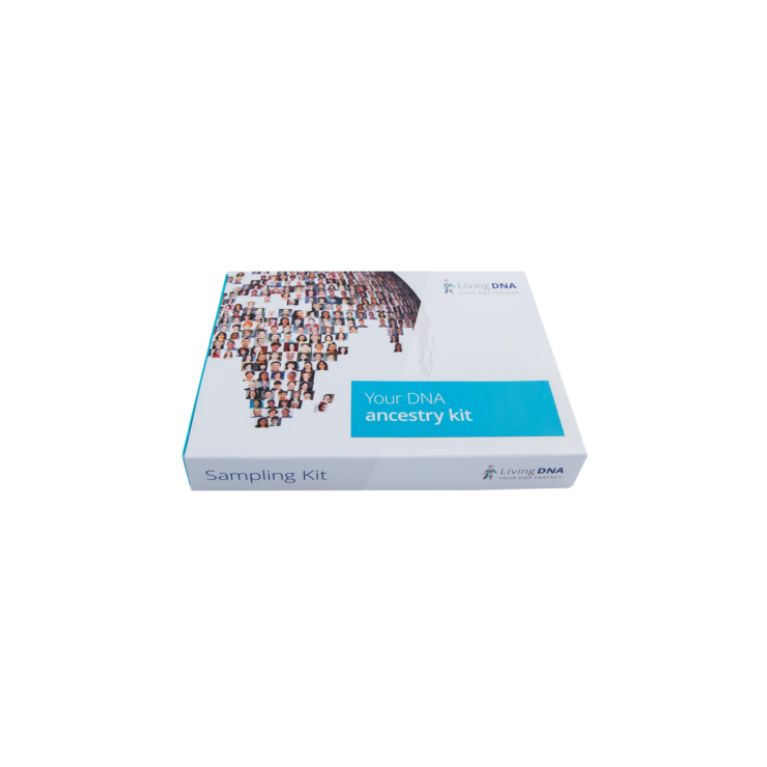
|
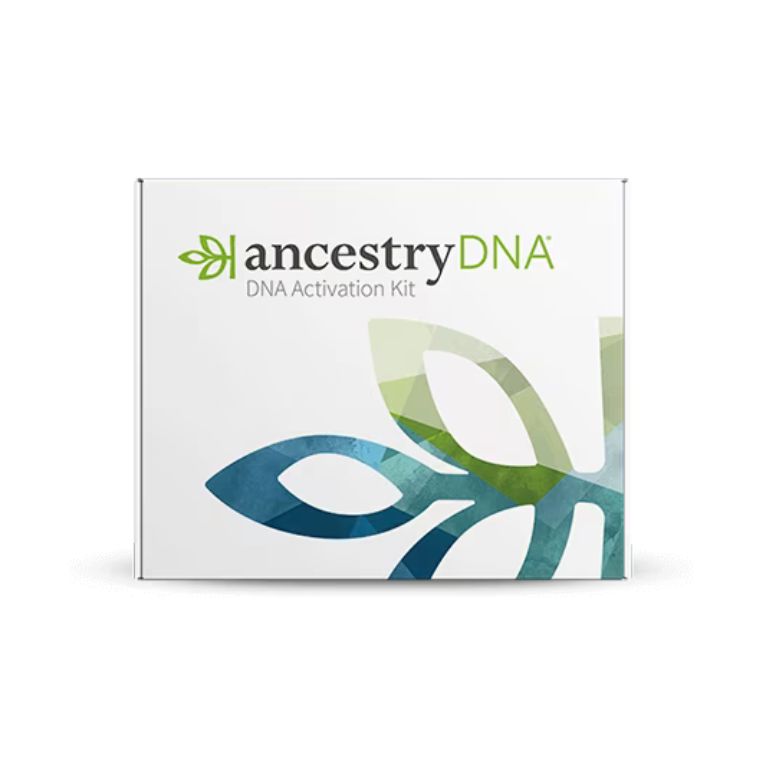
|
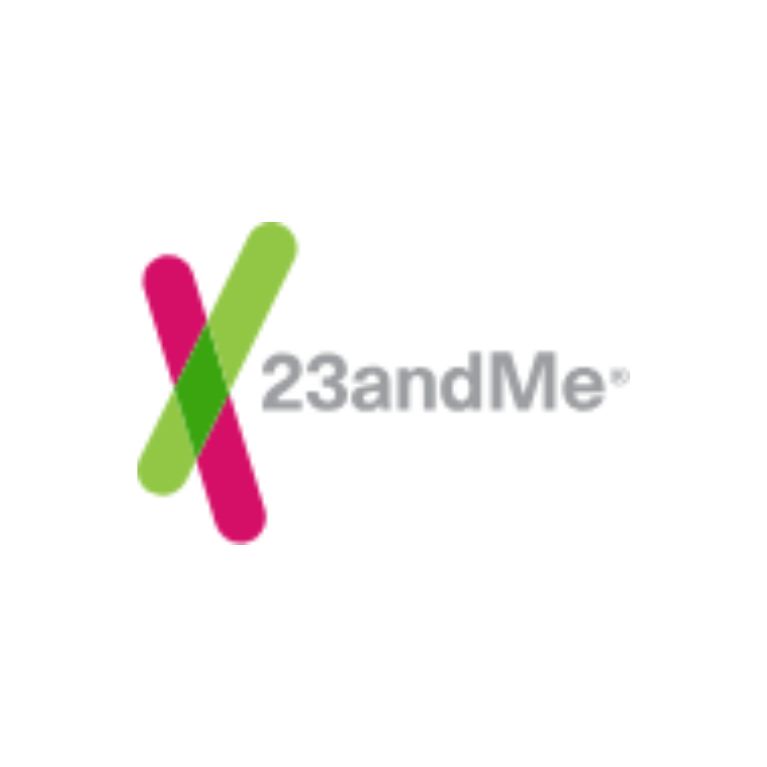
|
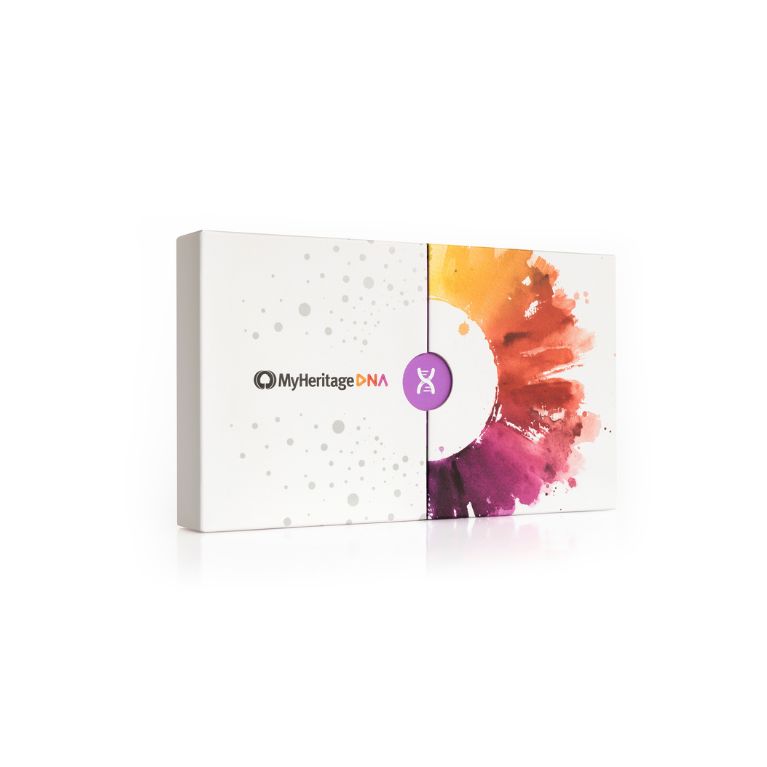
|
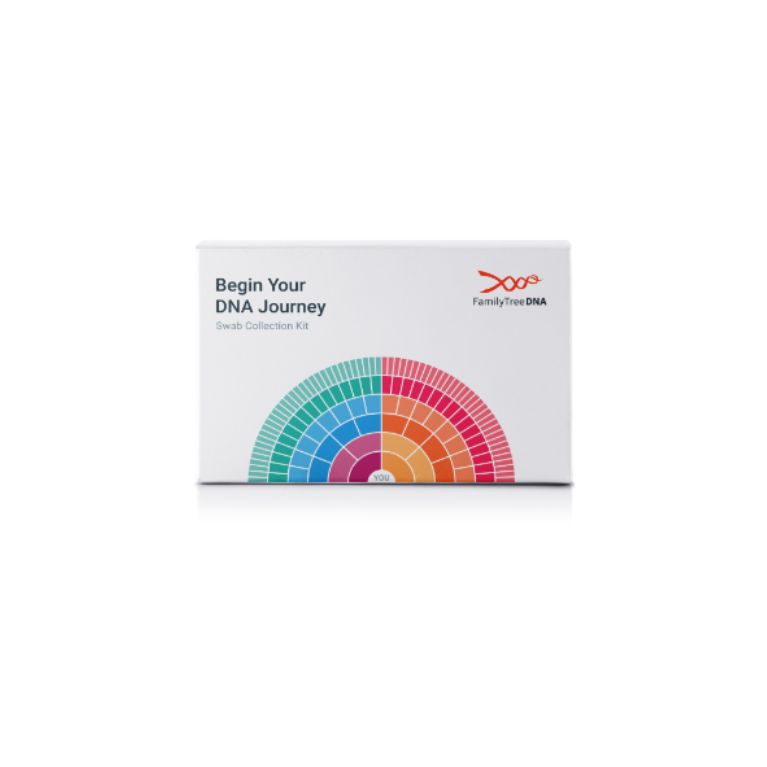
|
|
| Living DNA | Ancestry | 23andMe | MyHeritage | Family Tree DNA | |
| Rating | |||||
| Price | $124-$225 | $99-$199 | $119-$999 | $89-$299 | $79-$449 |
| Wait time | 6-8 weeks | 6-8 weeks | 4-6 weeks | 3-4 weeks | 2-8 weeks |
| Collection method | Cheek swab | Saliva | Saliva | Cheek swab | Cheek swab |
FAQs
Is Living DNA accurate?
Like any at-home DNA testing kit, the ethnicity percentages are an estimate, and the accuracy of Living DNA’s ancestry results can vary based on where your heritage is traced back to. Its reference groups span 150 regions, with larger sample populations within British, African, and European regions. If your ancestry comes from an underrepresented population, providing accurate results may be more challenging. It’s also important to remember that autosomal DNA most effectively identifies close relatives, typically within five to seven generations. Beyond that, the information becomes more diluted, making it harder to determine precise relationships. (3)
How far back does Living DNA go?
The typical full ancestry report through Living DNA includes what the company calls your recent ancestry, which goes back approximately 10 generations or about 500 years of heritage. If you choose the Neanderthal kit or upgrade to it anytime, you’ll receive more detailed information about your ancestry from 80,000 years ago.
How long does Living DNA take to process?
You can expect to get your ancestry results back from Living DNA about six to eight weeks after the lab receives your sample. The total processing time can vary based on where you’re located and the mailing service you choose to use if not using a pre-paid shipping label. Additionally, if your sample has to go through customs to return to the UK lab, it can further impact the turnaround time if there’s a delay in that process.
Our experts
Dr. Aneesha Dhargalkar
Dr. Aneesha Dhargalkar is a board-certified emergency medicine physician currently practicing in West Chester, PA. She graduated cum laude from John Hopkins University in 2002 and from Jefferson Medical College in 2006. After this, Dr. Dhargalkar attended and completed a three-year residency program in emergency medicine at Temple University Health System. Dr. Dhargalkar is the director of her hospital’s wellness provider program and sits on the executive board of both the Chester County Suicide Prevention Task Force and the Unionville Chadds Ford School District Education Foundation.
Heather Morsellino
Heather Morsellino is a freelance writer and fact-checker with over four years of experience in healthcare. She has worked as a pharmacy technician, emergency room medical scribe, and anesthesia technician in the operating room and will finish her ADN within the following year.

Corey Jungwirth, NBC-HWC
Fortune Recommends Staff Writer
About Author
Corey Jungwirth is a National Board Certified Health & Wellness Coach with over 11 years of experience working in health and wellness. Additionally, she has earned certifications as a Behavioral Health Coach and Lifestyle Medicine Coach. For over five years, Corey has enjoyed combining her wellness knowledge with her passion for writing. When she’s not writing about it, Corey enjoys engaging in her own health by running, taking Peloton classes, and playing soccer and volleyball. She also enjoys spending time with her family, reading, and being outdoors as often as possible. Corey lives in a cozy home in the woods in Wisconsin with her two kids, husband, and dog, Kona.
